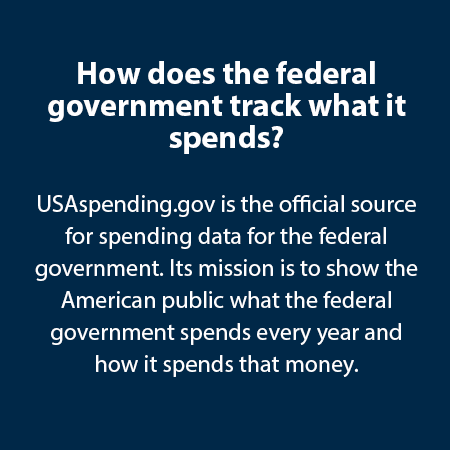Gaps in Pandemic Spending Data

As part of our transparency mission, we’re dedicated to providing you with the most detailed information on how pandemic funding is spent. For example, you may want to know how much pandemic relief money your community received from the federal government. This money may have helped your favorite restaurant stay open or a local school deliver meals to students learning remotely.
But getting the answers can be difficult because of the quality and availability of federal spending data. We’ve previously reported about “data gaps”– information that is missing, hard to find, or meaningless.
Along with ten of our oversight partners, we attempted to close some of the gaps to find out how much pandemic funding went to six randomly selected communities. Despite our best efforts, we still could not find all the data and information we needed.
Sometimes data was either unreliable or unavailable. In other cases, we had to use data sources that the public can’t access. One partner had to access five federal non-public databases to determine the recipients in a single program.
We’ve been tackling the data gaps issue for a while. Here are some more examples.
Missing data:
Data that's not reported or collected by a federal agency.
Example: There were several programs where we couldn’t determine how much money had been either obligated or spent. The Department of Housing & Urban Development (HUD) Office of Inspector General couldn’t determine how much money had been spent by recipients in Springfield, MA for three HUD programs because the programs were not designed to collect that data.
Example: COVID-19 programs should be identified by a code indicating they were funded by pandemic relief legislation. However, the Veterans Rapid Retraining Assistance Program is missing that code. When that happens, data for the program is not available on our website.
Example: Current data reporting does not require information from entities that get money from subrecipients. We have no insight into this spending, so we don’t know all the money that may have flowed to a local community. For example, the Coronavirus Relief Fund (CRF) has 864 prime recipients who gave money to approximately 90,000 subrecipients, such as a local government. In some cases, these subrecipients passed some (or all) of the money they received to other entities, who then spent the money.
Hard to find data:
Data that’s difficult to find on a government website.
Example: There is some data that can’t be integrated into USAspending.gov. For example, subrecipient data in the State and Local Fiscal Recovery Funds program could not be displayed like other pandemic spending data. Instead, spreadsheets were posted separately to make the data publicly available.
Example: Some agencies have publicly issued additional data (which also can’t be integrated to USAspending.gov) that they have collected about recipients who got money from certain programs, like the Restaurant Revitalization Fund and the Emergency Rental Assistance Program. However, this data is not easily accessible on the agency's website. Once found, the data must be downloaded by a user.
Example: We previously reported that the Education Stabilization Fund’s three largest subprograms (the Elementary and Secondary School Emergency Relief Fund, the Governor’s Emergency Education Relief Fund, and the Higher Education Emergency Relief Fund) were not reported separately to USAspending.gov. This makes it hard for the public to find data in each of the subprograms. Now, the Department of Education has a Transparency Portal that breaks down funding by subprogram and provides more information on how funds are being used.
Meaningless data:
Information that’s technical or full of jargon.
Example: We previously reported that more than 15,400 awards worth $33 billion have meaningless descriptions that make it difficult to know how the money was used. For example:
- 12,600 awards use descriptions that just repeat the name of the program, like “Community Development Block Grants/Entitlement Grants”
- 2,500 awards are described using only technical jargon that the public or policymakers can’t understand, like “CCC5-2021”
- 360 awards list variations of pandemic-related relief legislation, like “CARES ACT”
The first step to understanding a program’s impact is to know where the money went. Here’s what we’ve done to close data gaps.
- We made five recommendations to the Office of Management & Budget to support their work with federal agencies to improve transparency for all federal spending.
- We’ve raised awareness of the issues in tracking pandemic spending for policymakers by participating in events with Congress and good government groups.
- We found some of that hard-to-find data and made it easier for you to use. We’ve taken additional data that agencies posted on their websites and created interactive dashboards with it.

